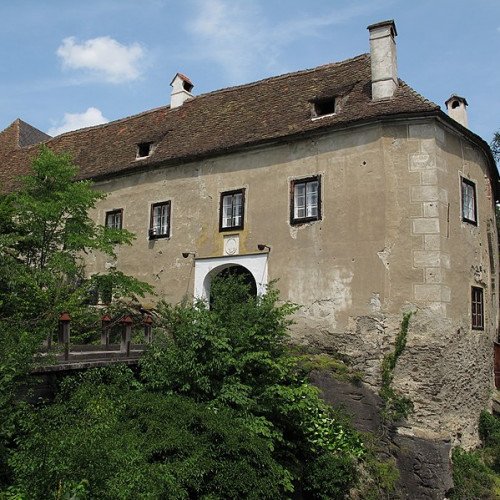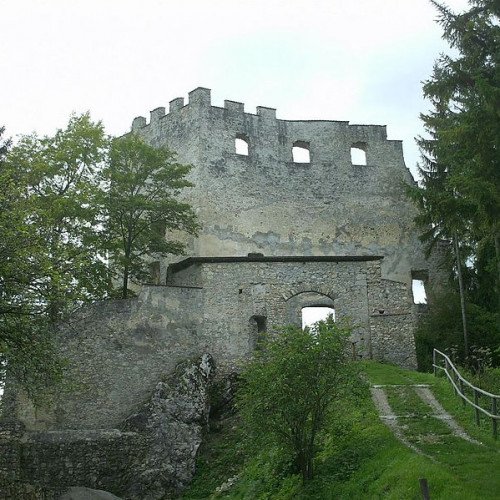Castles of "Austria" SCHLOSS GUTENBERG vs HOHENWANG CASTLE

SCHLOSS GUTENBERG
Schloss Gutenberg is a castle in Styria, Austria. Schloss Gutenberg is situated at a height of 567 meters. Schloss Gutenberg stands on a prominent rock by the Raabklamm in Gutenberg an der Raabklamm parish. The castle is a foundation of Luitold III of Waldstein, who moved into the castle in 1185. The castle has belonged to the Stubenberg family since 1288. The oldest section from the 12th century was supplemented by a 2-story bailey that is protected by two moats. The outer moat is bridged today, the inner was filled in. The castle was remodeled and expanded, mixing the medieval style with Renaissance elements. An irregular four-story building complex with an almost pentagonal footprint and similarly pentagonal courtyard. The rustic gate faces south. The southwest corner with the Chapel of Saint Pancras constitutes the oldest section of the castle. The chapel, originally constructed over three stories like a tower, with galleries in both upper stories, was dedicated in 1365. Entry is on the first gallery with frescoes that were isolated by the later addition of a dome. The frescoes from the second half of the 14th century show St. Alfa, St. James the Elder, the Martyrs of Ten Thousand, St. George, and the Caravan of the Three Kings. The Romanesque window behind the altar now has modern glass.
Statistics for this Xoptio

HOHENWANG CASTLE
Hohenwang is a ruined castle in Municipality of Langenwang, Styria, Austria. It stands on a hill at an elevation of 650 metres above sea level. The fortress, whose core dates back to the 12th century, is the symbol of Langenwang, one of the most important medieval fortifications that time and because of their exceptional length and the largest castles in Styria. It consists of the stronghold and two outworks, which are separated by trenches. Their massive decline began in the late 18th century, after it was severely damaged by an earthquake. During World War II more parts of the ruins were destroyed by bombing. From the fortress, a part of the Western nuclear plant, the shield wall of the high castle and the main gate are preserved in their perimeter today. The walls were mostly secured in the last 40 years by members of the Association Hohenwang castle and renovated. Hohenwang served as a local administrative center, the protection of the population in times of crisis, the case-colonization and the associated spread of Christianity in the upper Muerztal. From the 13th century a priest resided at the castle. Despite the regional importance their masters were allowed only to the exercise of the lower courts. Offenders who had been guilty of felony, had to be transferred to the district court in Kapfenberg. Because of their visual connections to neighboring fortresses also a day and night reception Kreidfeuerposten was in the 16th century near the castle set to warn against Turkish raids and provided with "guns", it means cannons and arquebuses. It is an elongated complex with stronghold, a deeper front castle with gatehouses and a curtain wall. It is oriented from southwest to northeast and extends over a total length of 90 meters. A donjon was not available. From the 13th to the 17th century, the romanesque core eastward to the Palas, a gallery, a kennel, a bastion and a representative gatehouse was enlarged. In a 15th-century chronicle exists a more detailed description of the interior of the castle, in the place, inter alia, of the chapel, a servants' room, some room, a large hall, four cellar, four cereal boxes, a bath-room, a kitchen and vaulted stables for twelve horses is talk. The three well-secured gates, two of which provided with a slip gate, the attachment to the ditch and finally the south, west and north, very steep cliffs made a storming of the fortress to a difficult task. In addition to the engraving by Georg Matthäus Vischer, the castle is also shown on a proclamation image that had given Ulrich Christoph von Scherffenberg in 1631 in order.